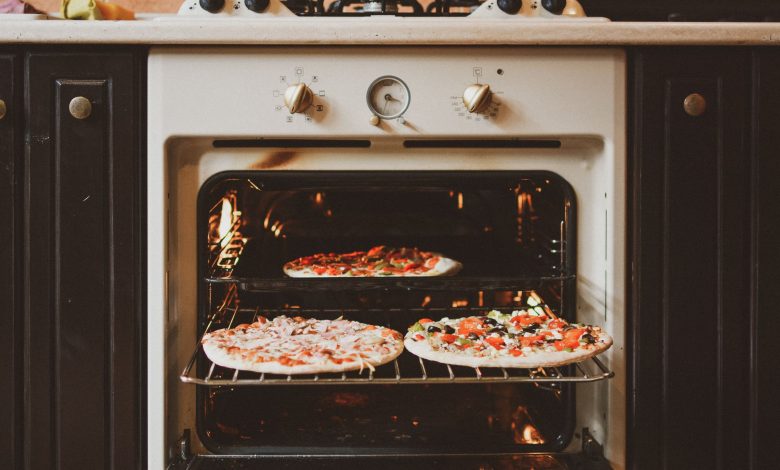
For good reason, pizza is one of the most popular and well-loved comfort foods in the world. It’s cheesy and saucy, with plenty of carb-rich dough baked to perfection. It’s simple to stop by your favorite pizza joint for a slice or to have a pie delivered to your door. But nothing beats the satisfaction of making your own pizza.
Homemade pizza can be tailored to your preferences, whether you want a Detroit-style Deep Dish recipe or a veggie NYC-style recipe, and eating it can taste even better as a result of the effort put into it. You may even eat at your leisure. But most likely not. it’s time to stop ordering pizza from your preferred pizza joint and try your hand at making it yourself.
It’s not as difficult as you might think, as long as you follow a few key guidelines laid out by some of the country’s pizza experts. Pizza making, more than a hobby, is can also be an art form, so you’ll need to put in some practice time before you can make the perfect pizza.
There are numerous common mistakes to avoid when making homemade pizza. The flour you use is just as crucial as how you arrange your toppings on top of the dough. You want your pizza to be the best it can be. And we’re here to see that it happens.
Take note of these common pizza-making mistakes and you’ll be baking beautiful pies in no time.
Cooking at the Wrong Temperature
Nobody wants soggy pizza dough when they’re trying to perfect their own pie at home. The key to preventing this is to pay close attention to how you cook the pizza dough. The temperature at which you cook your pizza is critical and can mean the difference between a soggy pie and a crispy one. To get that perfect crust, bake your pie at 475 degrees Fahrenheit for 10 to 12 minutes for ultimate perfection that is anything but soggy.
The key is to ensure that the bottom of the pizza has sufficient heat. Higher temperatures work well in pizza ovens, but regular home kitchen ovens may require longer cooking times at a lower temperature. Consider lowering your pizza on the oven rack so that the bottom receives the same amount of heat as the top.
Not Letting the Dough Rest
If you’re working with store-bought dough or your own homemade version, you’re probably dealing with a cold ball of dough that’s hard and difficult to manipulate with your hands. Because of the struggle, you may overwork the dough, resulting in a dense texture that no one wants to bite into.
Instead of tensing your muscles trying to wrangle cold, uncooperative pizza dough, take it out of the fridge and set it aside for at least five minutes before stretching. This brings the dough closer to room temperature, softening and making it more malleable. Once it reaches that point, get in there and stretch.
Using the Wrong Flour
When it comes to making pizza dough, you might not think about the type of flour to use. Instead, reach into your cabinet and pull out any old flour you’ve stashed away. However, when it comes to creating quality pizza dough, flour matters, and you should not use just any flour.
Too much gluten in the flour, such as bread flour, results in tough dough and is not a good choice for a fluffy pizza. When making pizza, flour that has the right amount of gluten and absorbs water quickly is preferable which has the appropriate amount of gluten and absorbs water effectively to accomplish a soft dough rather than a tough one.
Putting Too Many Toppings
Do pizza toppings overwhelm you that you just choose to put them all? If you have more than three, this can end badly for your homemade pie. More than three toppings will not only overwhelm your palate but will also overload the crust, resulting in a soggy or sodden product.
If you pile on too many toppings on your pizza, it will become heavy and soggy. Because they have the equipment and pizza ovens to keep your pizza flawlessly crisp, your favorite pizza place can get away with it.
When it comes to a light sauce, a sprinkle of mozzarella, and your favorite pepperoni slices, less is more. Balance protein and produce, follow the three-to-three rule or try to emphasize just one single, fresh, high-quality topping.
Key Takeaway
Pizza is one of the most straightforward and satisfying dishes to prepare at home. While ordering in is convenient, biting into fresh, homemade pizza is far more satisfying — and the process of making it is far too enjoyable to pass up.
Personalization abounds when you forego the local takeout menus, from getting your hands dirty whipping up the dough and making your own sauce to selecting the cheese and adding the toppings.
Even though making pizza is simple, enjoyable, and delicious, avoiding a few common mistakes increases your chances of having a memorable pizza night.




